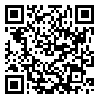Volume 2, Issue 2 And Supplement (Absteracts-Spring 2021)
J Vessel Circ 2021, 2(2 And Supplement): 15-15 |
Back to browse issues page
Download citation:
BibTeX | RIS | EndNote | Medlars | ProCite | Reference Manager | RefWorks
Send citation to:



BibTeX | RIS | EndNote | Medlars | ProCite | Reference Manager | RefWorks
Send citation to:
Mazaheri S. Nodo-Paranodopathy: A new category. J Vessel Circ 2021; 2 (2) :15-15
URL: http://jvessels.muq.ac.ir/article-1-170-en.html
URL: http://jvessels.muq.ac.ir/article-1-170-en.html
Department of Neurology, Sina Hospital-Hamadan University of Medical Sciences, Hamadan, Iran
Abstract: (674 Views)
Background: Polyneuropathies are traditionally classified into demyelinating or axonal, according to whether the pathologic process affects primarily the myelin/Schwann cells or the axon. Node of Ranvier structures are a key target of autoantibodies in chronic inflammatory neuropathies. In the peripheral nervous system gangliosides are present in both axons and myelin, and biochemically there are no significant quantitative differences of the major gangliosides in human ventral and dorsal roots. Impairment of sodium-calcium pump function is hypothesized to lead to intracellular calcium accumulation contributing to eventual axonal degeneration.
Classification:
This classification has electrophysiological correlates employed for diagnosis and to establish prognosis. Other neuropathies in which nodal dysfunction is hypothesized to play a role in disease pathogenesis are included:
• Acute motor axonal (neuropathy)variant of Guillain-Barre syndrome (AMAN)
• Guillain-Barre syndrome with autoantibodies associated with nodal antigens
• Chronic inflammatory demyelinating polyradiculoneuropathy (CIDP) associated with autoantibodies to nodal antigens
• Miller Fisher syndrome
• Multifocal motor neuropathy (MMN)
• Marine toxins
• Drugs with ion channel blocking properties (phenytoin) (more electrophysiologic than clinical)
• Possibly critical illness polyneuropathy(CIP)
• Possibly ischemic monomelic neuropathy
• Possibly thiamin deficiency
IgG autoantibodies to gangliosides GM1 and GD1a are associated with acute motor axonal neuropathy (AMAN), acute motor conduction block neuropathy (AMCBN)and acute motor-sensory axonal motor neuropathy (AMSAN). IgG anti-GQ1b antibodies are strongly associated with Fisher syndrome, mono-specific IgG antibodies to GD1b are found in patients with ataxic GBS and acute ataxic neuropathy (ASAN), and patients with pharyngeal–cervical brachial weakness more often carry IgG anti-GT1a antibodies.
Classification:
This classification has electrophysiological correlates employed for diagnosis and to establish prognosis. Other neuropathies in which nodal dysfunction is hypothesized to play a role in disease pathogenesis are included:
• Acute motor axonal (neuropathy)variant of Guillain-Barre syndrome (AMAN)
• Guillain-Barre syndrome with autoantibodies associated with nodal antigens
• Chronic inflammatory demyelinating polyradiculoneuropathy (CIDP) associated with autoantibodies to nodal antigens
• Miller Fisher syndrome
• Multifocal motor neuropathy (MMN)
• Marine toxins
• Drugs with ion channel blocking properties (phenytoin) (more electrophysiologic than clinical)
• Possibly critical illness polyneuropathy(CIP)
• Possibly ischemic monomelic neuropathy
• Possibly thiamin deficiency
IgG autoantibodies to gangliosides GM1 and GD1a are associated with acute motor axonal neuropathy (AMAN), acute motor conduction block neuropathy (AMCBN)and acute motor-sensory axonal motor neuropathy (AMSAN). IgG anti-GQ1b antibodies are strongly associated with Fisher syndrome, mono-specific IgG antibodies to GD1b are found in patients with ataxic GBS and acute ataxic neuropathy (ASAN), and patients with pharyngeal–cervical brachial weakness more often carry IgG anti-GT1a antibodies.
Type of Study: Review |
Subject:
vascular neurological diseases
Received: 2021/10/25 | Accepted: 2021/10/2 | Published: 2021/10/2
Received: 2021/10/25 | Accepted: 2021/10/2 | Published: 2021/10/2
| Rights and permissions | |
 |
This work is licensed under a Creative Commons Attribution-NonCommercial 4.0 International License. |






